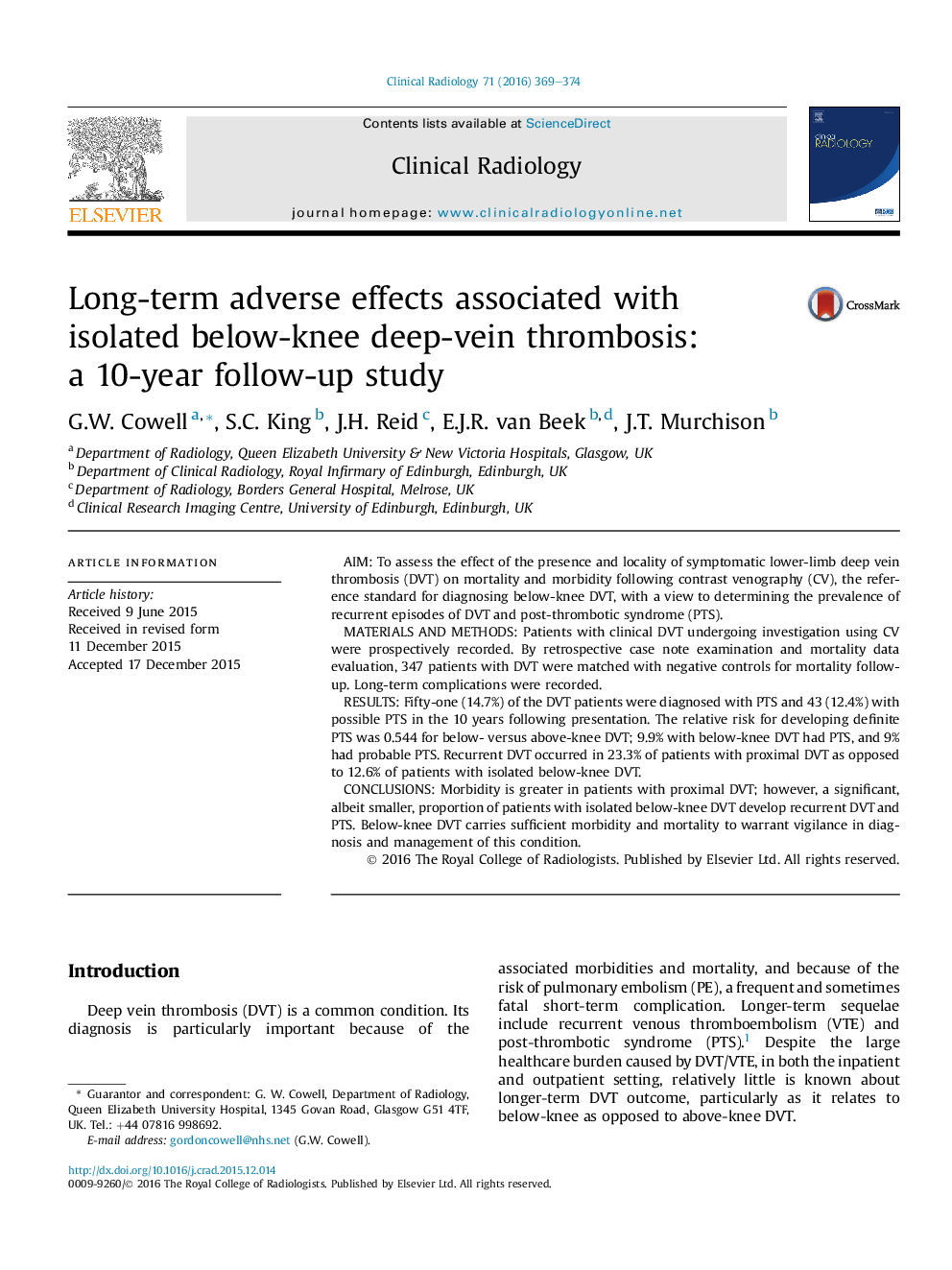| Article ID | Journal | Published Year | Pages | File Type |
|---|---|---|---|---|
| 3981402 | Clinical Radiology | 2016 | 6 Pages |
•We assessed the effect of symptomatic lower limb DVT on mortality and morbidity.•Morbidity is greater in patients with proximal DVT.•A small percentage of patients with distal DVT develop post thrombotic syndrome.•Distal DVT warrants vigilance in diagnosis and management of this condition.
AimTo assess the effect of the presence and locality of symptomatic lower-limb deep vein thrombosis (DVT) on mortality and morbidity following contrast venography (CV), the reference standard for diagnosing below-knee DVT, with a view to determining the prevalence of recurrent episodes of DVT and post-thrombotic syndrome (PTS).Materials and methodsPatients with clinical DVT undergoing investigation using CV were prospectively recorded. By retrospective case note examination and mortality data evaluation, 347 patients with DVT were matched with negative controls for mortality follow-up. Long-term complications were recorded.ResultsFifty-one (14.7%) of the DVT patients were diagnosed with PTS and 43 (12.4%) with possible PTS in the 10 years following presentation. The relative risk for developing definite PTS was 0.544 for below- versus above-knee DVT; 9.9% with below-knee DVT had PTS, and 9% had probable PTS. Recurrent DVT occurred in 23.3% of patients with proximal DVT as opposed to 12.6% of patients with isolated below-knee DVT.ConclusionsMorbidity is greater in patients with proximal DVT; however, a significant, albeit smaller, proportion of patients with isolated below-knee DVT develop recurrent DVT and PTS. Below-knee DVT carries sufficient morbidity and mortality to warrant vigilance in diagnosis and management of this condition.
